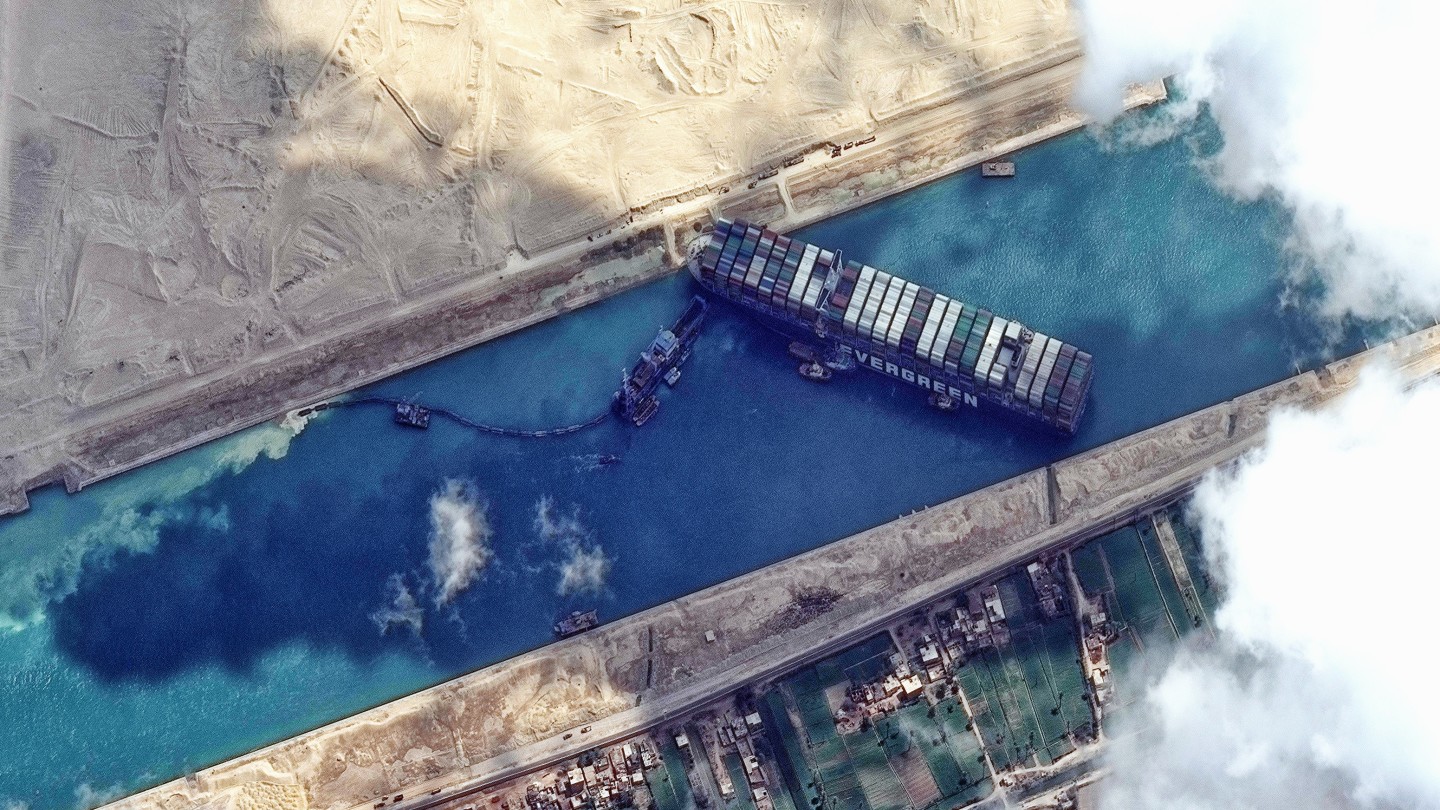The huge container ship blocking the busy Suez Canal is, perhaps, the best analogy ever given for innate tensions — and potential frictions — at the core of contemporary demand and supply networks.
Ever Given was enroute from Tanjung Pelebas, Malaysia to Rotterdam carrying about 20,000 TEU. Not long after entering the Suez Canal high winds drove the ship’s bow into the east side of the canal. It has now been stuck for five days. “Each day of blockage disrupts more than $9 billion worth of goods, according to Lloyd’s List, which translates to about $400 million per hour” (more).
The ship’s beam (width) is precisely as big as possible to still use the canal. This maximizes potential volume for the highest seaborne velocity between East Asia and Western Europe. A large load allows maritime carriers to prorate their costs (and profits) over more units of throughput. This is usually a win-win for shipper, carrier, and consumer. Except when a pandemic shuts down most flows. Except later in the same pandemic when surging consumer demand exceeds current shipping capacity. Except when shipping capacity is compromised by too many containers being left outside current circulation.
Concentrations typically speed and smooth exchange within and between concentrations, allowing more to be done with less more quickly. Supply optimized to demand reduces waste, costs, and can allow lower prices.
Concentrations also aggregate risk, especially when and where multiple concentrations intersect, as at the Suez Canal where twelve percent of planetary trade and thirty percent of global container flows line-up to be threaded between the Red Sea and the Mediterranean. Concentrations of production, demand, and conveyance coincide in a single thin, shallow trench. For the moment these concentrations have collided and highly optimized flow is paused.
Not all flows have stopped. There are alternative routes that require more time and cost. But already congested ports are more crowded. Insufficient maritime capacity is further constrained. Fulfilling late-stage pandemic demand will be delayed. Post-pandemic economic recovery is further complicated. Friction accrues. Flows slow. The frenetic energies of optimized demand and supply networks reverse into an increased incidence of commercial failure. Networks furiously adapt to resist this conflation of negative feedbacks becoming a conflagration of economic collapse.
UPDATE ON MONDAY, MARCH 29: The Ever Given has been freed

Has anybody ever given the ocean a medal?
Who of the poets equals the music of the sea?
And where is a symbol of the people
unless it is the sea?
From The People, Yes! by Carl Sandberg